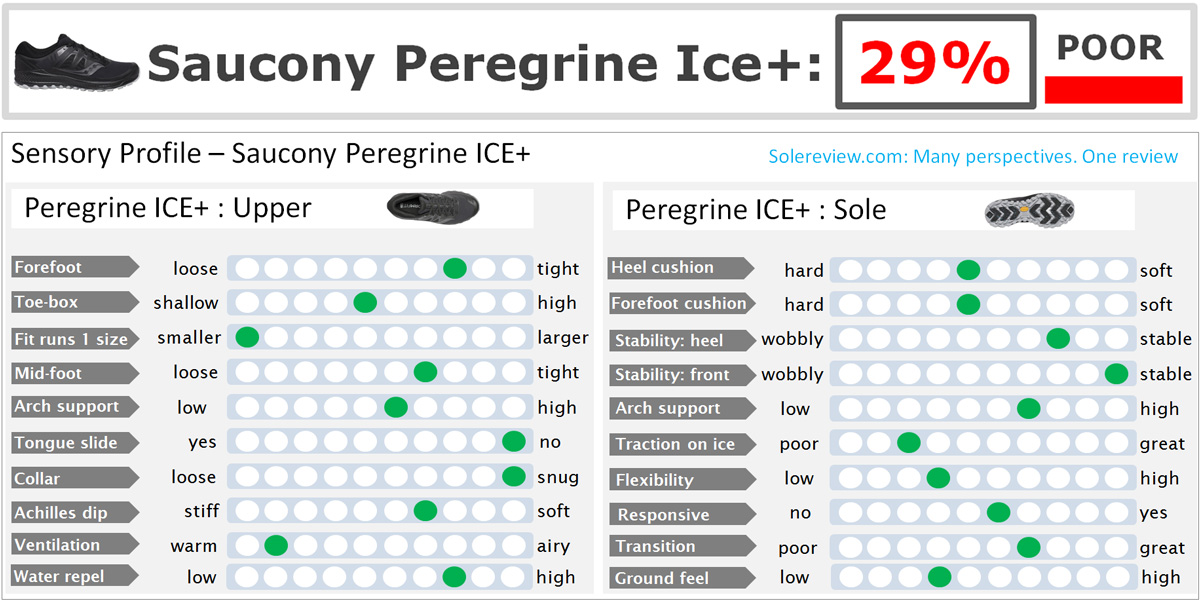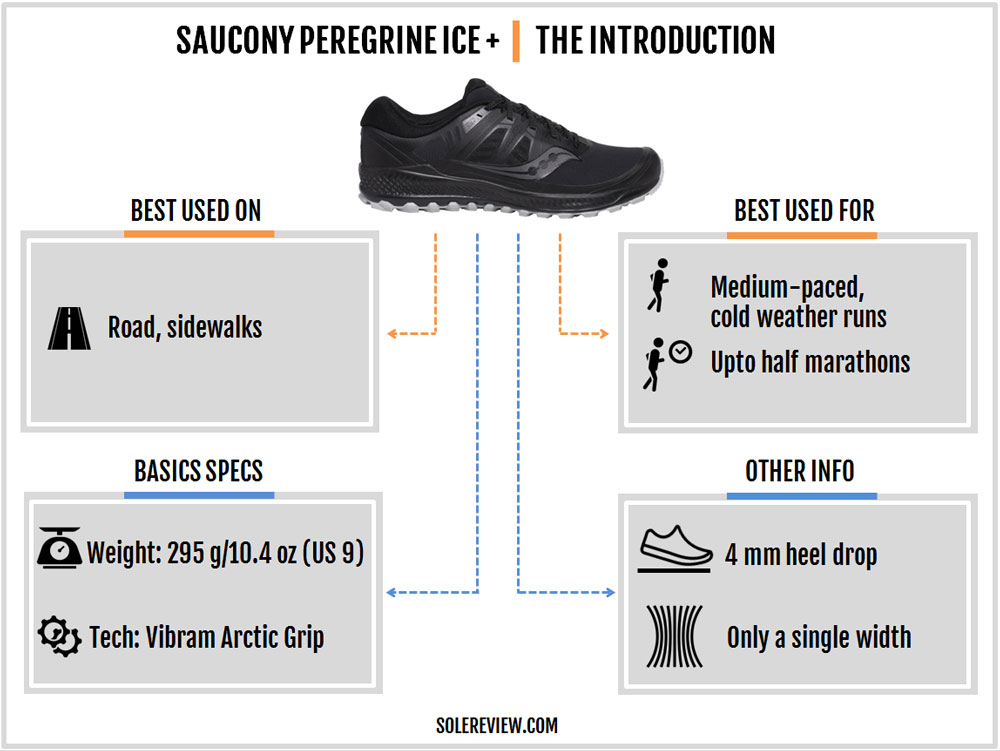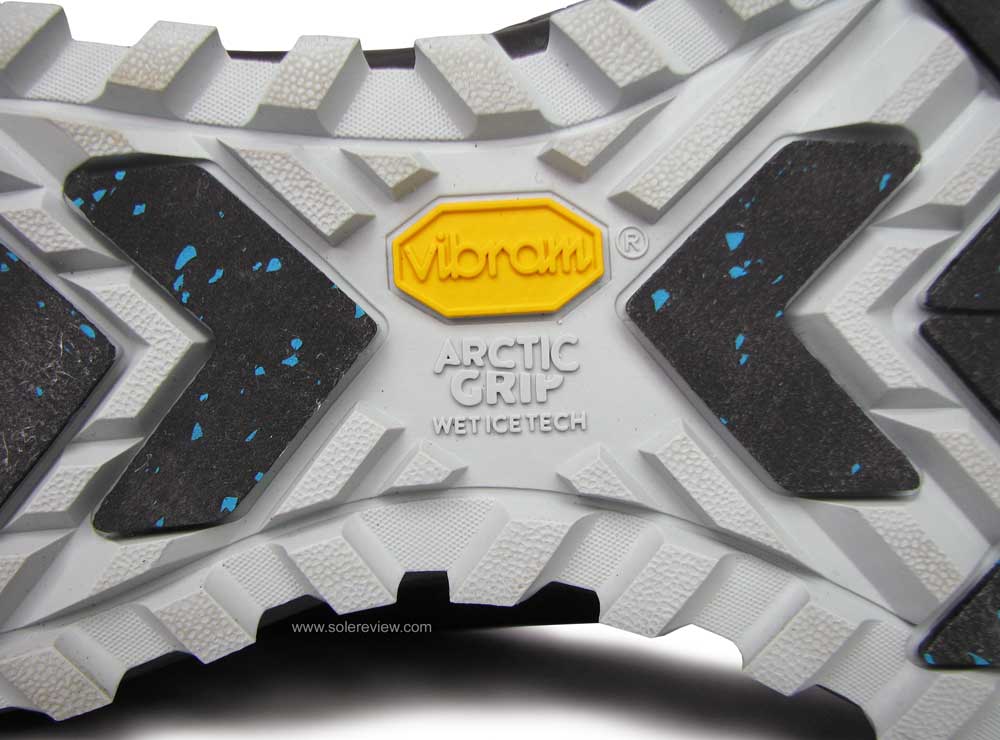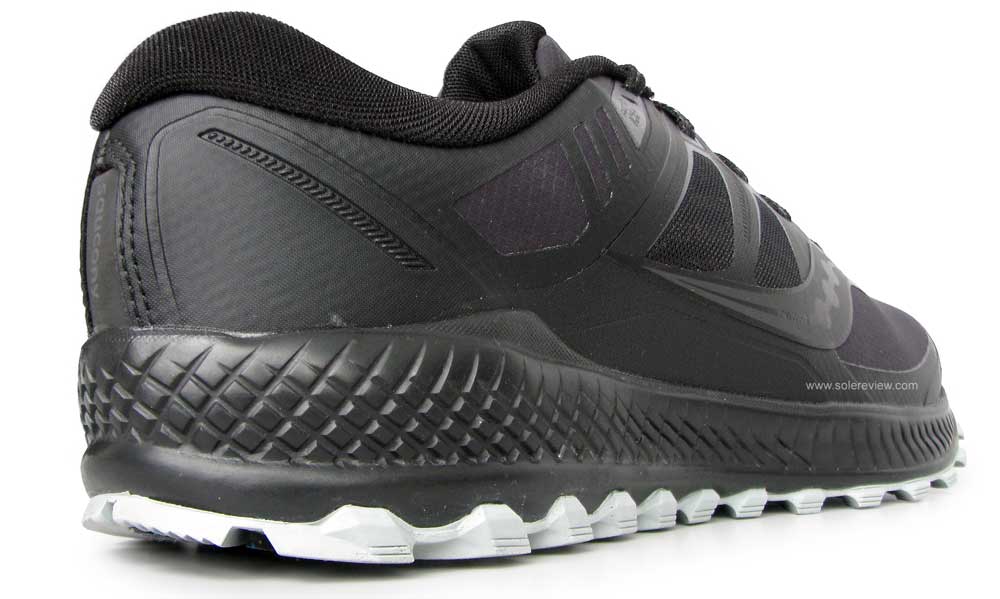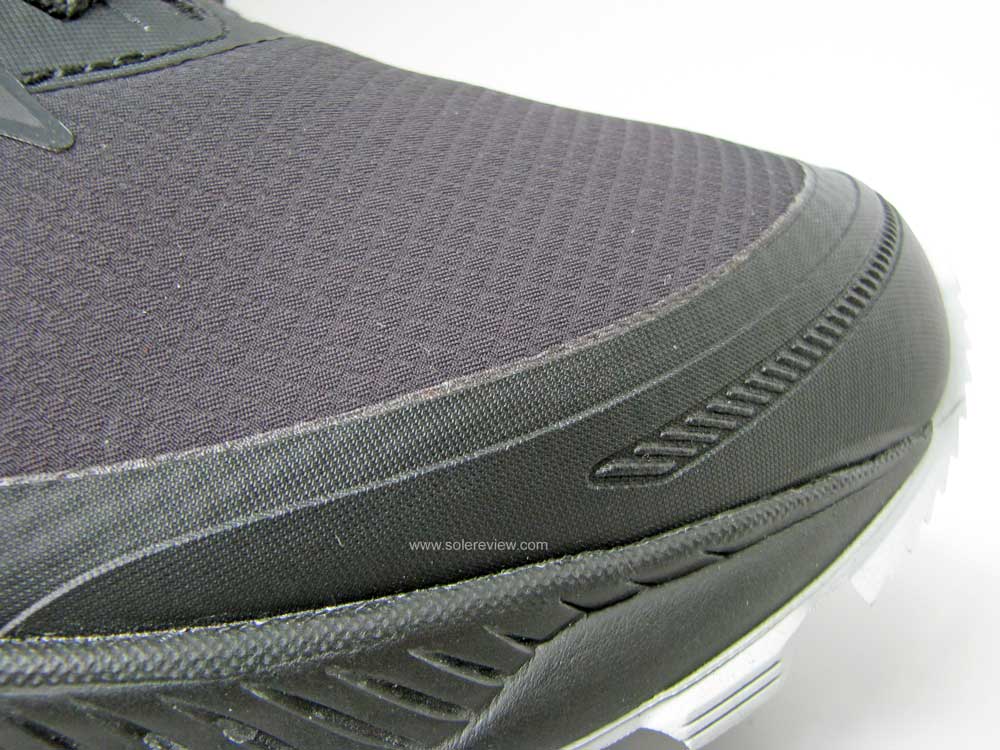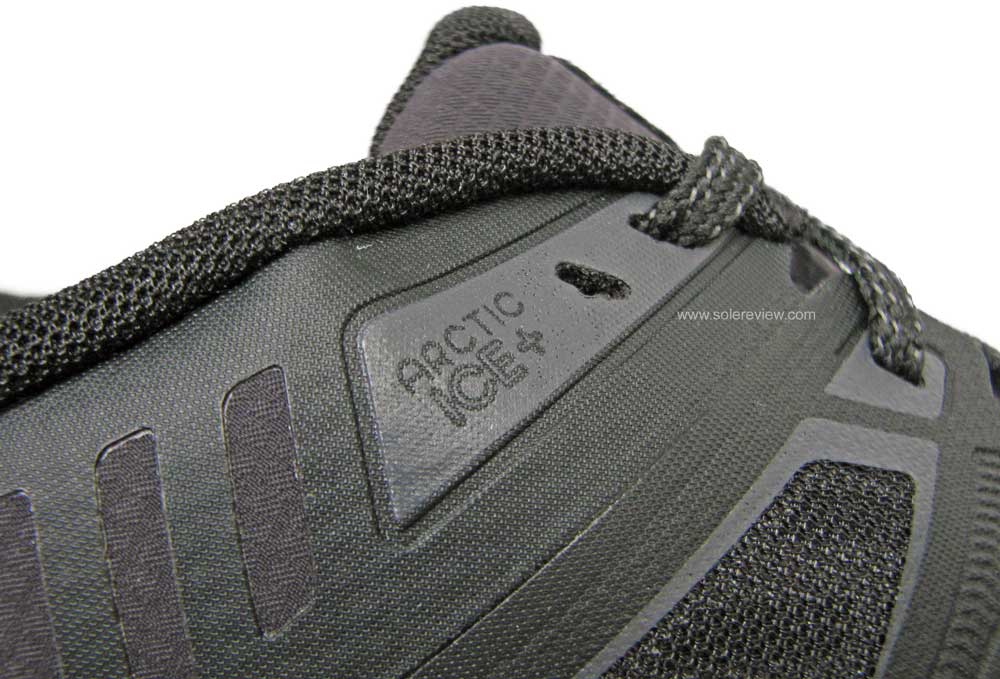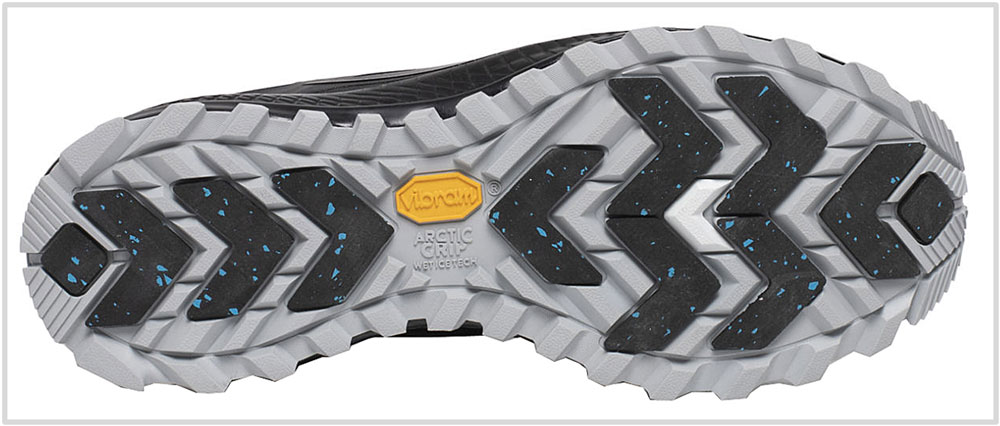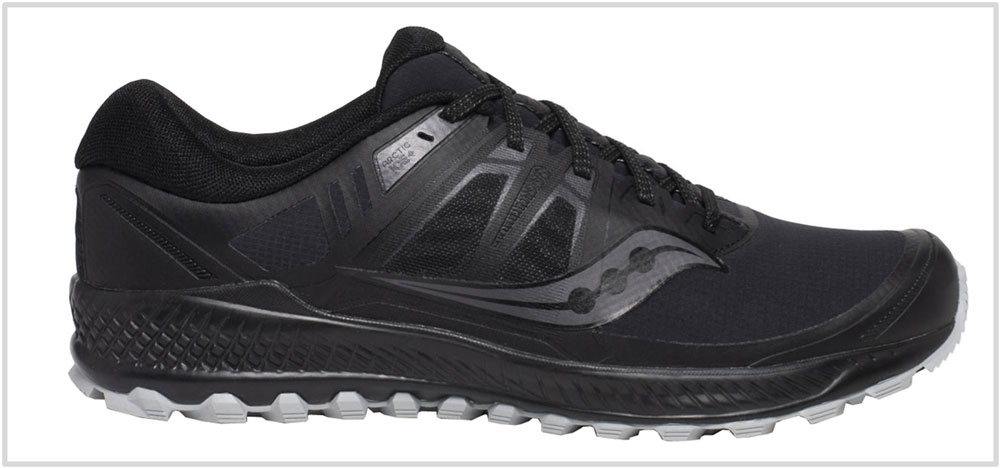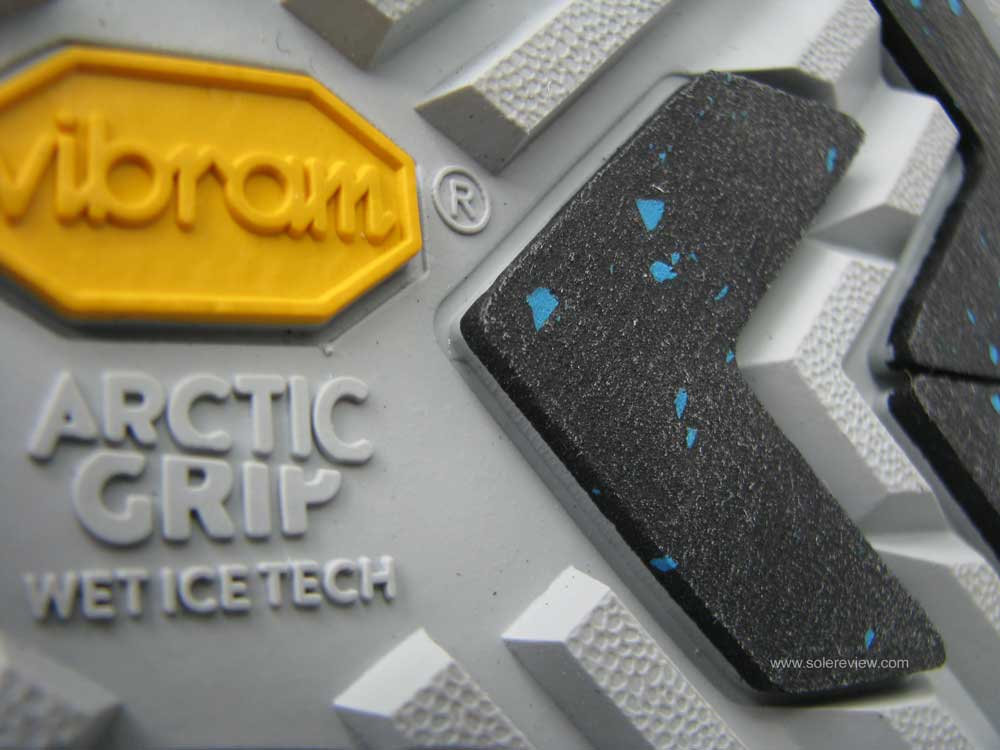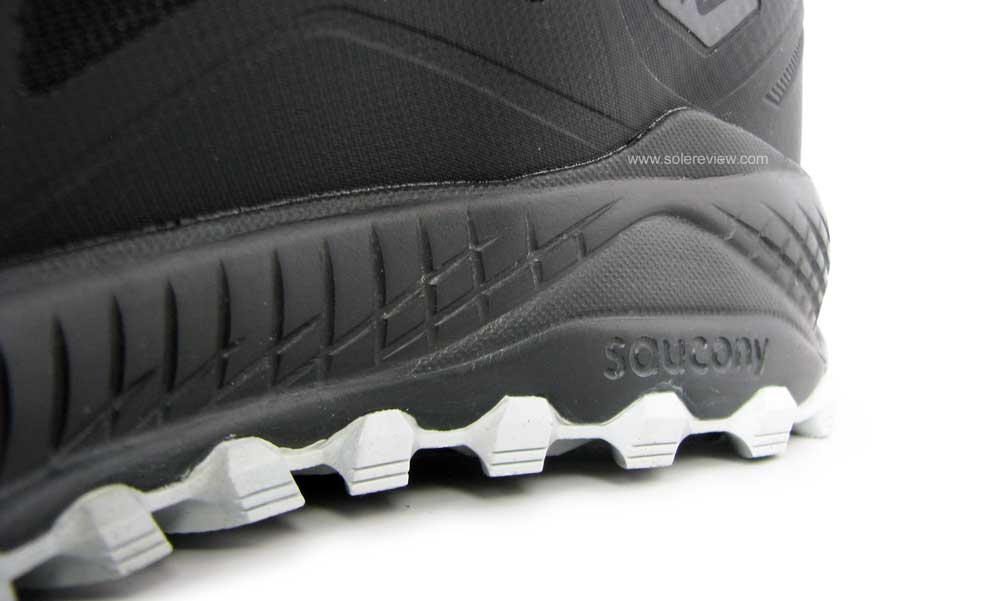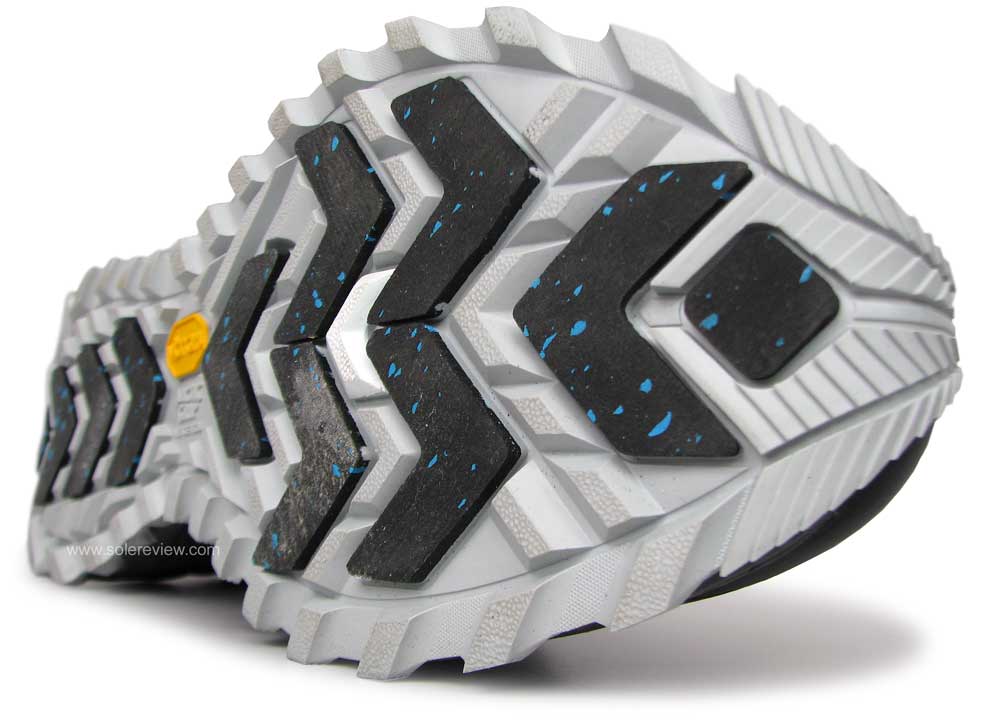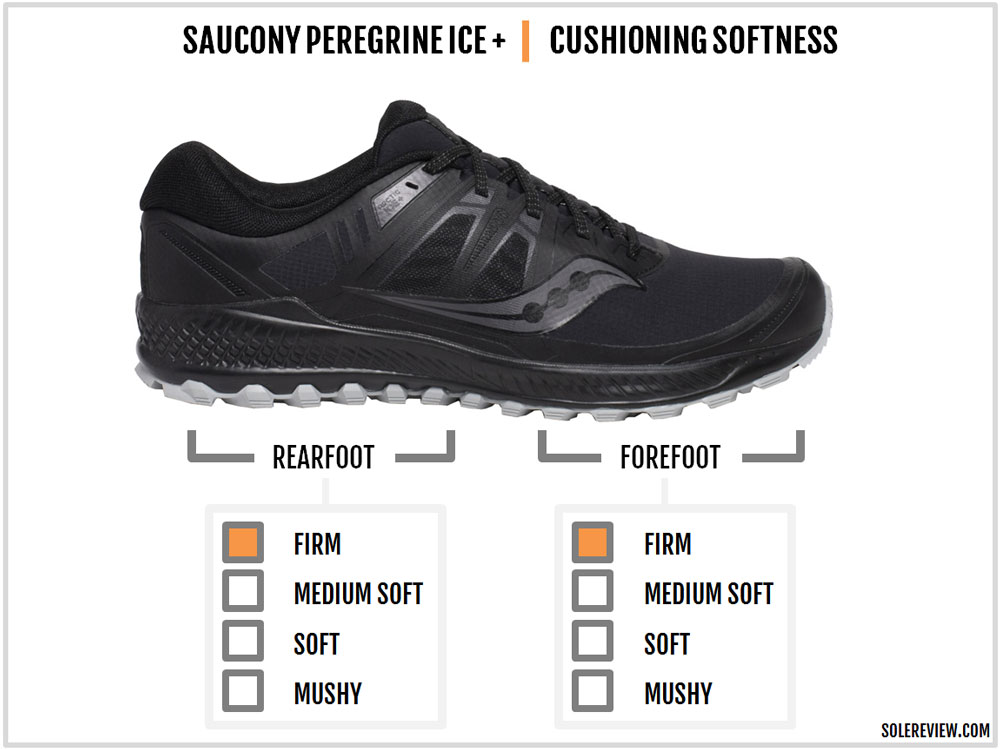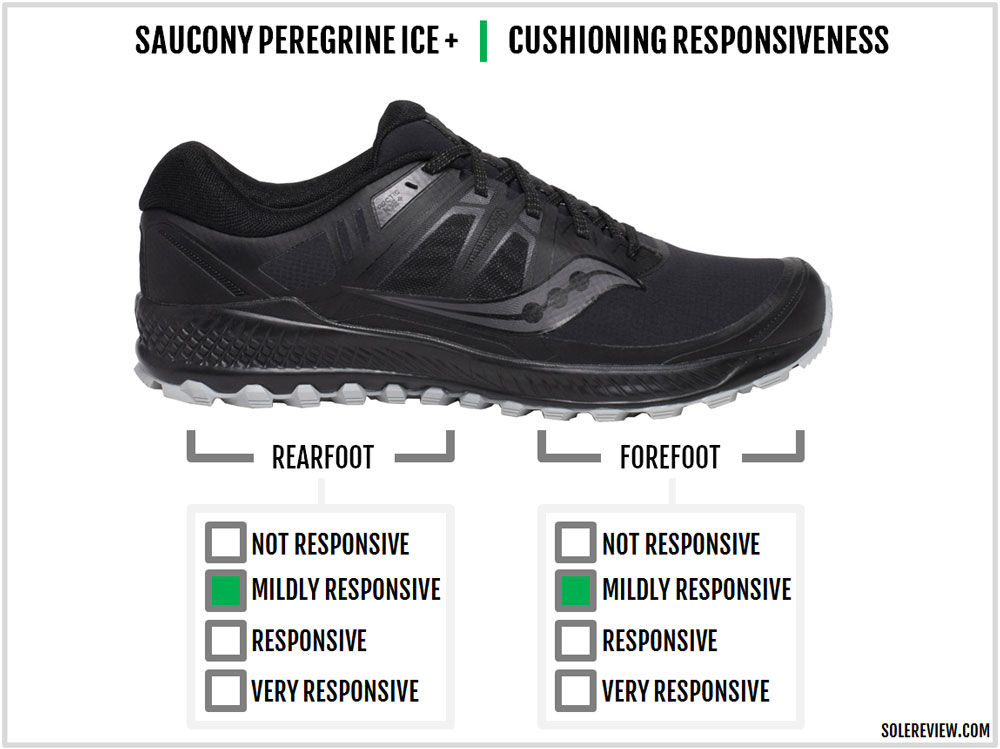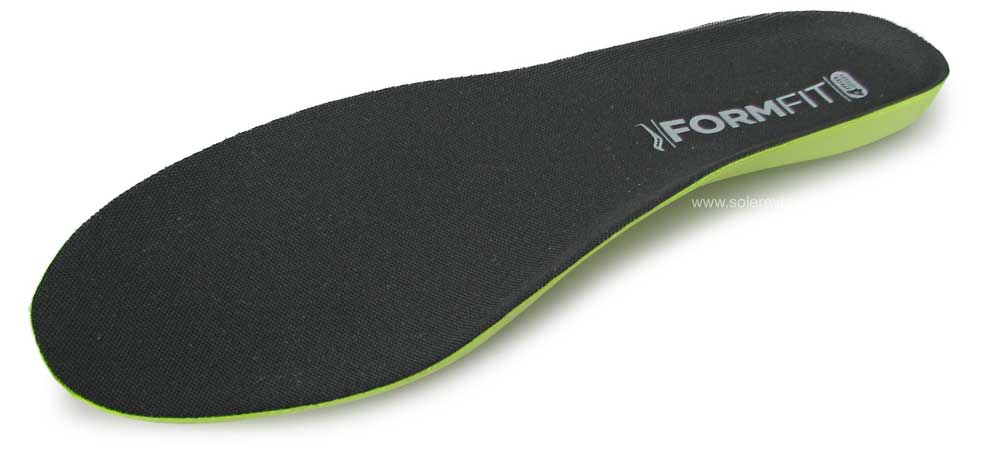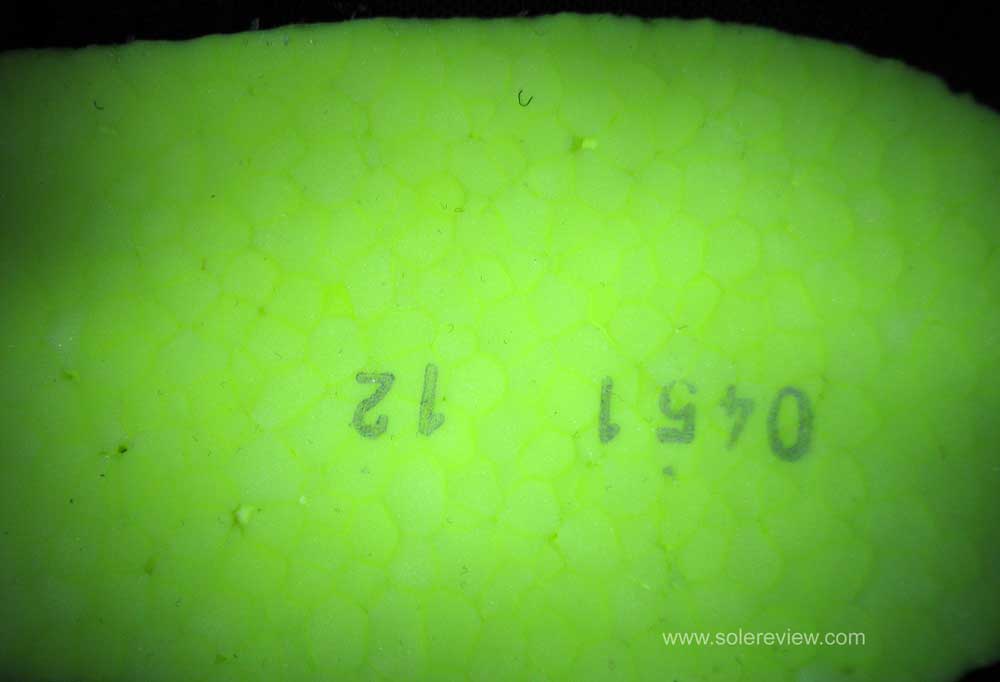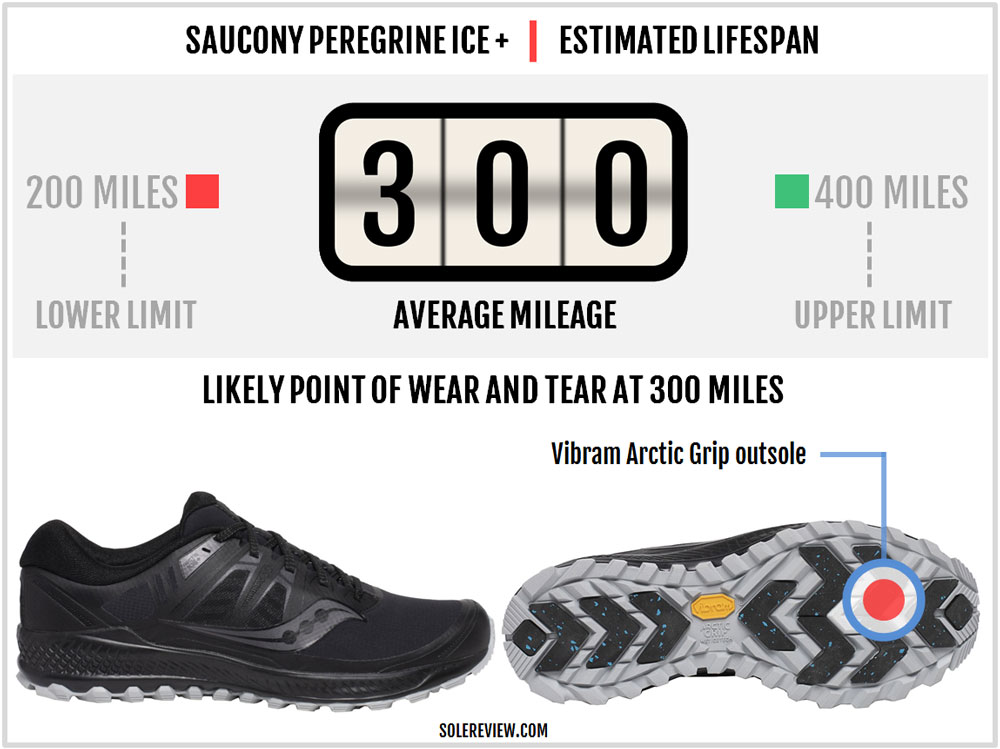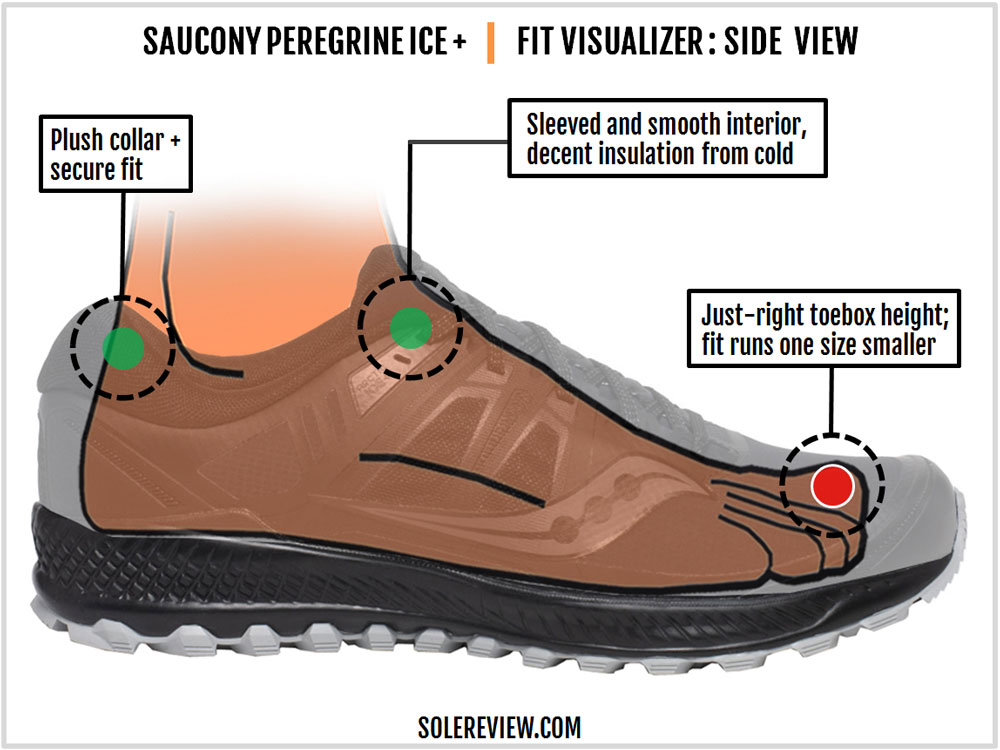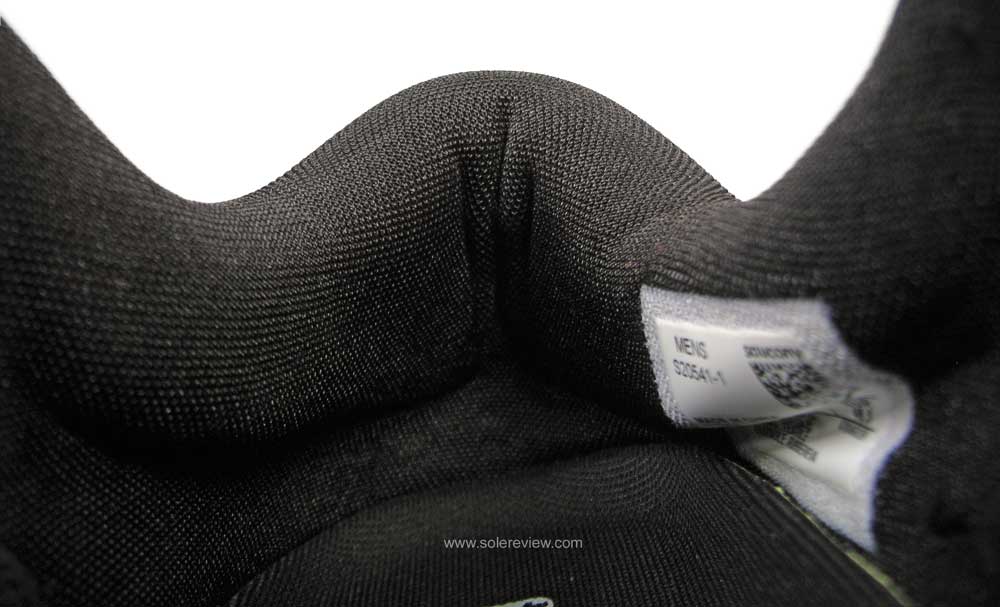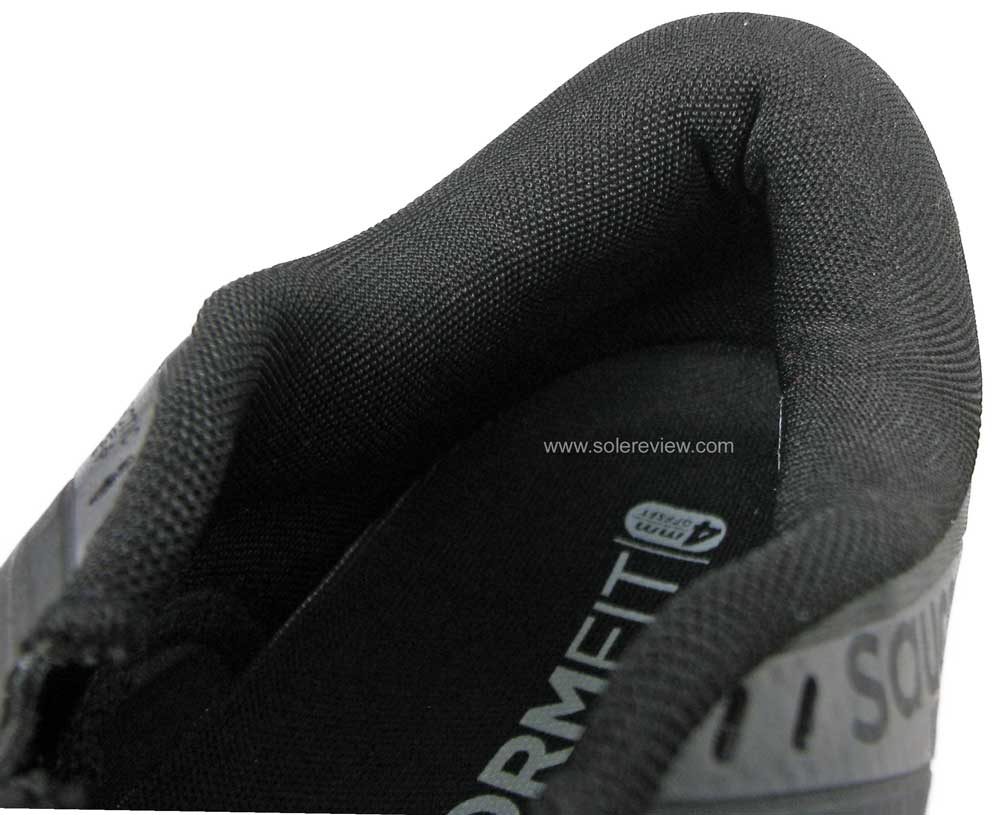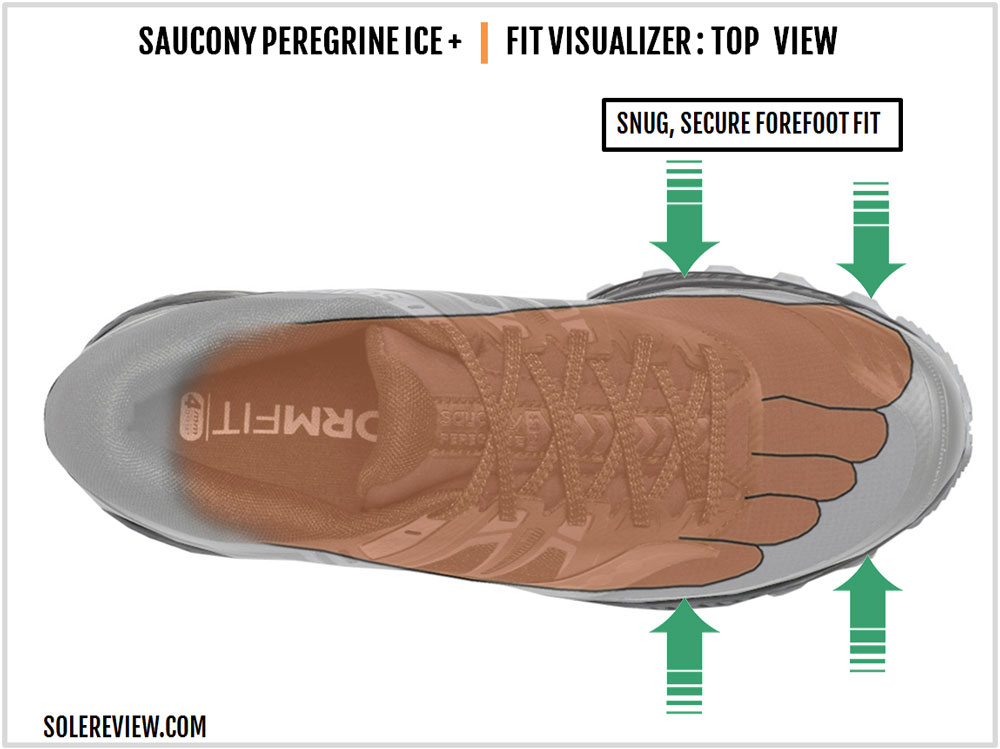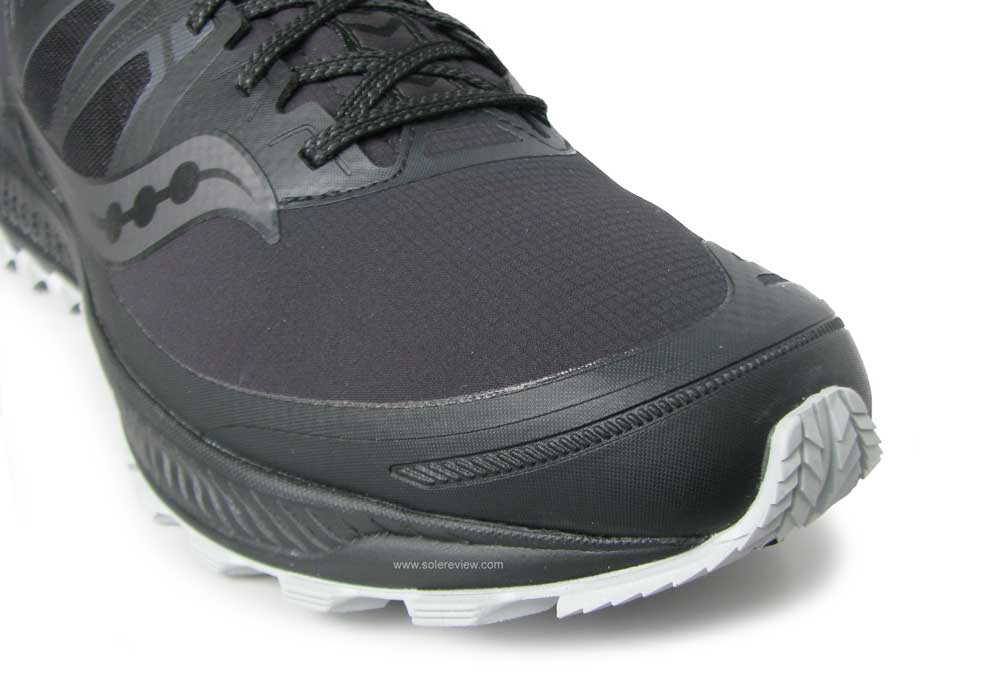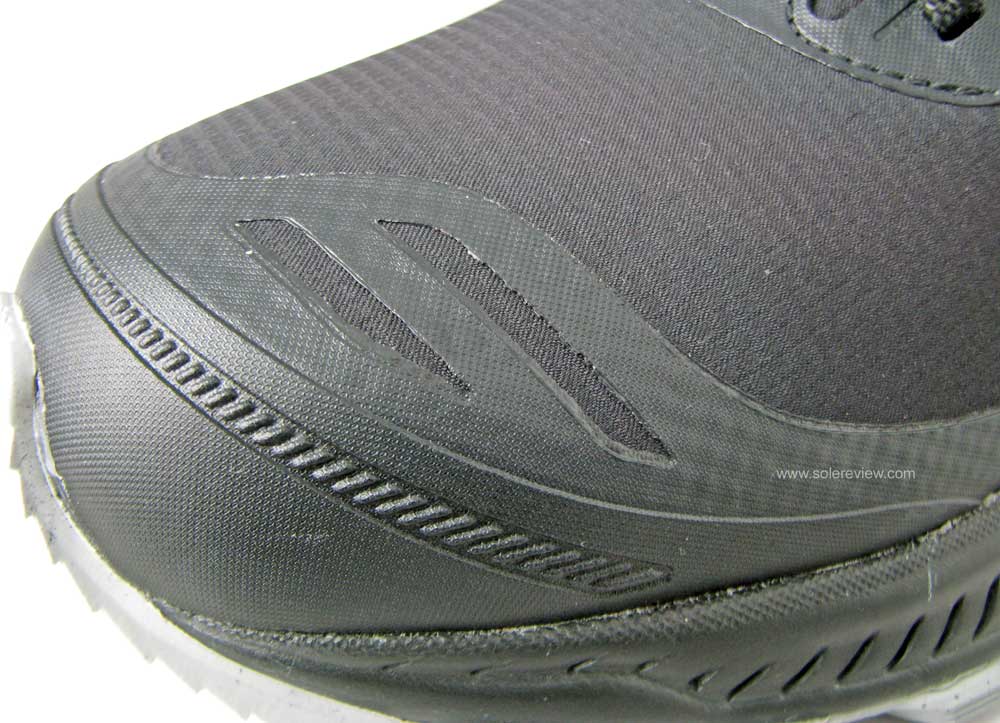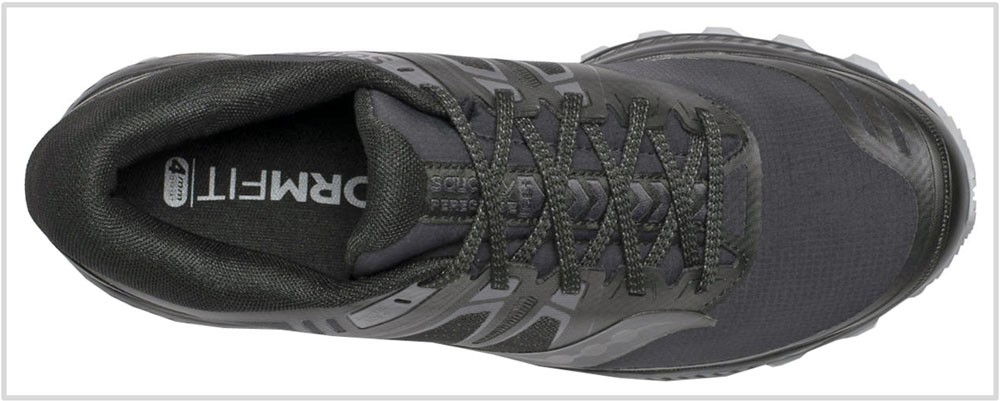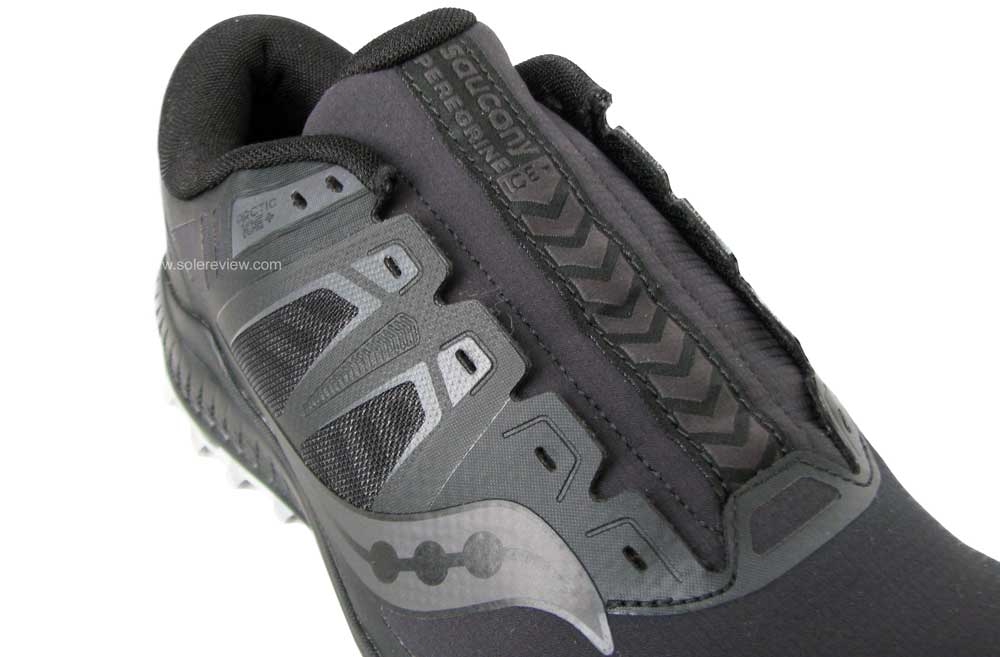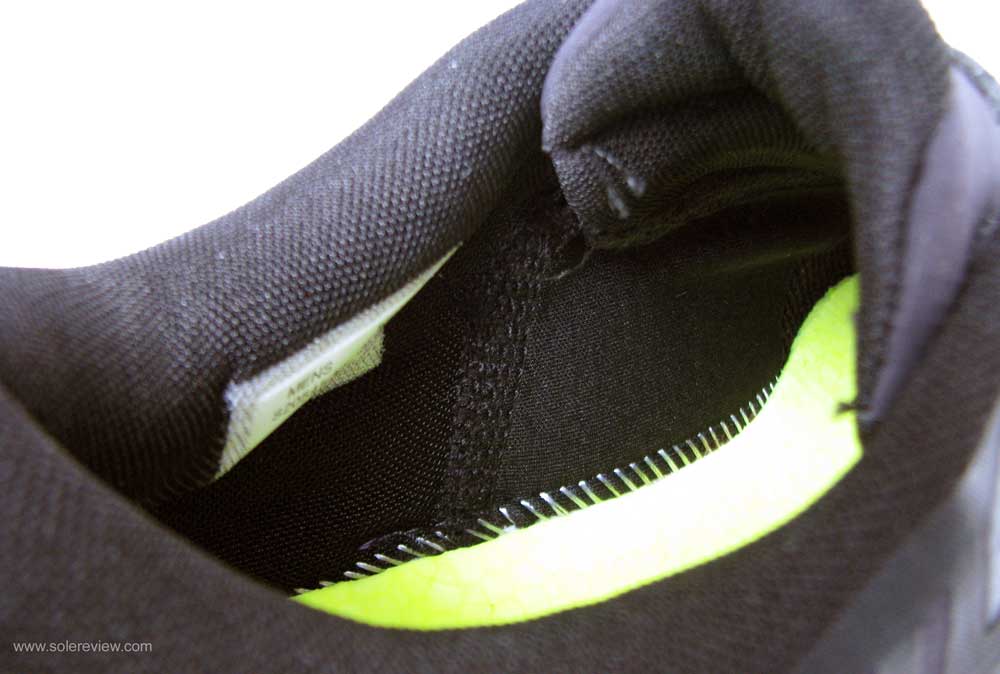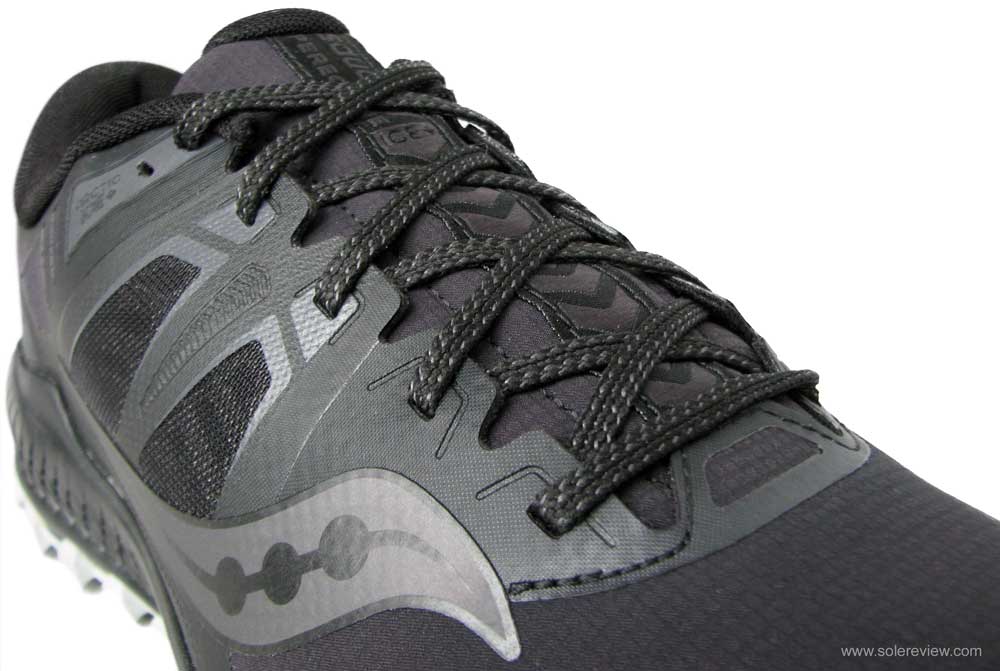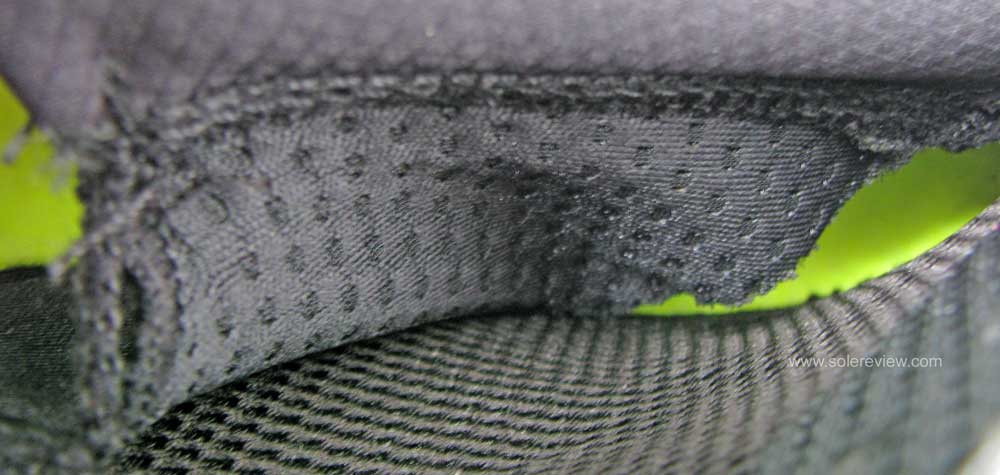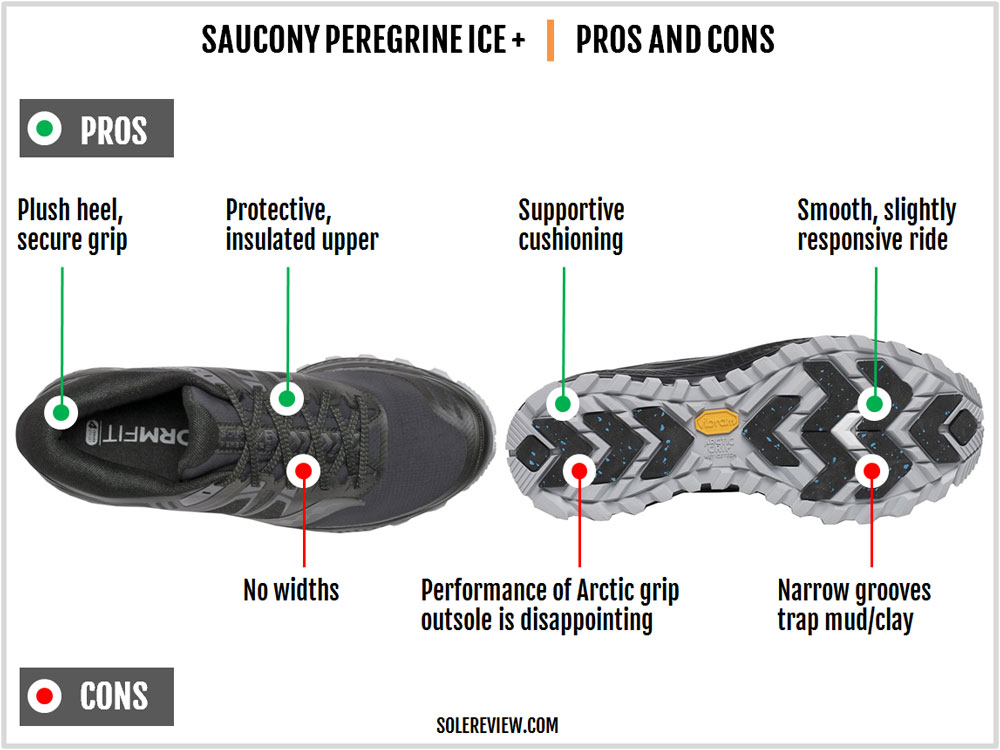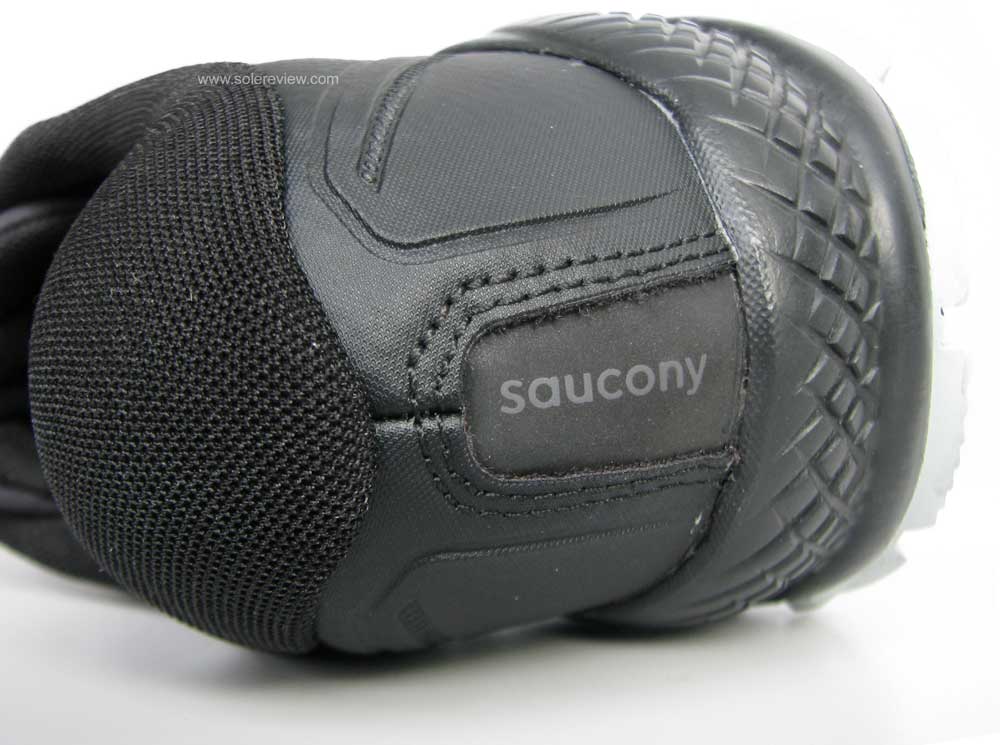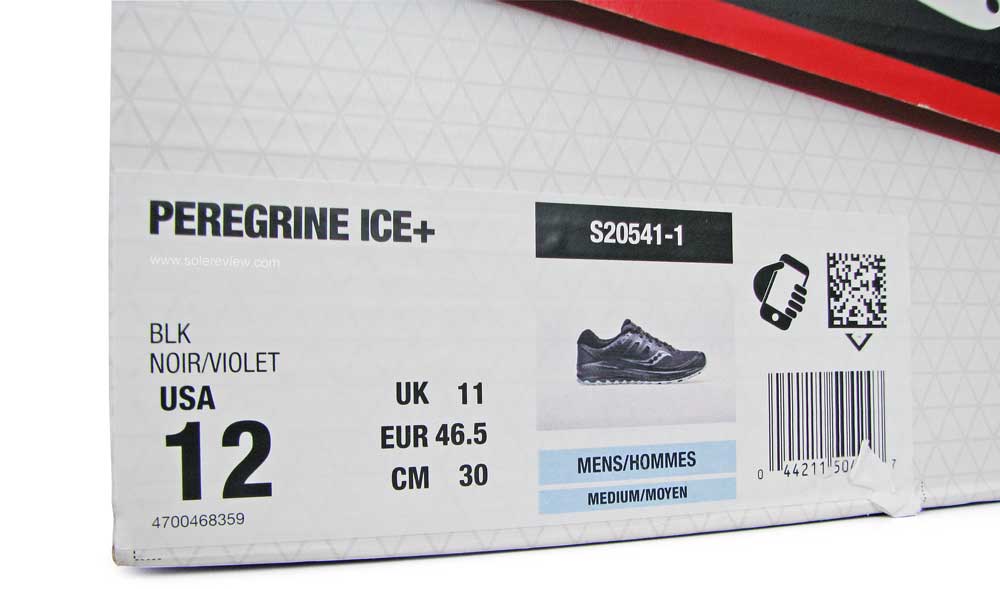INTRODUCTION
We’ve had the Saucony Peregrine ICE+ for exactly three months now, and we’ll say this right at the beginning: no other shoe we’ve reviewed so far has gone from a positive first impression to an overwhelmingly negative opinion in such a short period.
Sample this. This shoe featured – albeit briefly – in our guide for the best winter running shoes. Today, the Peregrine ICE+ is the recipient of the lowest score on Solereview.
The temporary inclusion in our guide was a screw-up – there’s no excuse for that. An apology is due, and here it is.
We bought it when the first cold weather ‘snap’ hit November, bringing with it an unexpected amount of snow and frigid temperatures. We thought that was a good time to begin testing the much-hyped Arctic Grip outsole. By then, we already had a shoe with the same technology – the Kodiak Dundonald to be specific – but that is a boot and not a running shoe.
Unless you’ve been living under a rock, you must have heard of Vibram’s ‘Arctic grip’ rubber. The well-known Italian manufacturer of footwear soles claims that this new rubber compound provides superior traction on wet, icy surfaces.
As evident from these ‘walking on ice’ demos, Vibram did not hold back. But how does this sandpaper-like rubber perform under real-life winter conditions?
Not very well.
As we put on more miles on this outsole, we realized that the Vibram technology isn’t all it’s cracked up to be. This is a typical example of tall promises falling woefully short.
That being said, if one ignores the outsole, the Saucony Peregrine ICE+ is very well put together.
The upper offers insulation, protection, and satisfactory levels of water-resistance. The upper is slightly short, but very secure-fitting. The ride is pretty comfortable too, thanks to the cushioned top layer and the EVA foam midsole.
However, the grip on wintery surfaces is very mediocre. The outsole traction and lug geometry have very limited versatility – after all, nature doesn’t design your sidewalks like Vibram’s ‘wet ice’ mall demos. You’re dealing with powder, hard ice, proper snow and the like – conditions where this particular rubber material fails to deliver.
As far as winter-running shoes go, there are superior choices. The Saucony Peregrine ICE+ isn’t a bad shoe, but: 1) It is expensive 2) The Vibram Arctic grip outsole is a let down in more ways than one.
In short, give this shoe a pass and spend your money someplace else. Running shoes with longer lugs made of sticky rubber are superior alternatives. If the soles have studs, even better. Read this guide for a complete list of winter-worthy shoes.
ALTERNATIVES TO THE SAUCONY PEREGRINE ICE+
Only Saucony sells running shoes equipped with Vibram’s Arctic Grip compound. So this section isn’t the typical comparison break-out featured in our other reviews.
Instead, we’ll feature two shoes that excel under harsh winter running conditions. It isn’t a surprise that both shoes feature spiked outsoles. After all, no matter how tacky or deep the lugs are, there’s simply no match for a set of spikes.
The first shoe is the Salomon Snowspike waterproof. When it comes to winter-worthy outsole traction, the Snowspike is our go-to shoe.
Its narrow-waisted outsole has lugs that are not only deep but is also equipped with Tungsten Carbide lugs. The long and soft rubber lugs dig deep into the snow while the metal studs maintain traction over the occasional icy patch.
The double-lasted upper has a secure fit and also conceals a foam midsole underneath. The stretchy zipped shroud over the upper protects the foot from the water and debris.
If you can do without the waterproof shroud, the IceBug BUGrip GTX is our next pick. A Gore-Tex lining works together with a BOA lacing system to deliver a secure and waterproof upper.
The IceBug NewRun is the shoe you get if your sidewalks and roads have more ice than snow. A set of 17 spikes attached to the rubber base not only delivers superlative grip, but also creates an easy ride experience. When weight-loaded, the spikes partially telescope inside the rubber outsole for smoother transitions.
THE SAUCONY PEREGRINE 8 ICE+ vs. SAUCONY PEREGRINE ICE+
Both versions share an identical midsole and outsole, so there’s no change in how the new Peregrine ICE+ rides. Though the upper is redesigned with slight tweaks in the lining and upper materials, the fit and sizing difference – if any – is nearly indistinguishable.
We prefer the muted look of the 2019-20 (present) model though. The new upper is more streamlined with a higher level of heel reflectivity.
THE RIDE EXPERIENCE
Even for an experienced shoe reviewer, it’s surprisingly easy to fall prey to cognitive bias. Case in point is the Saucony Peregrine ICE+.
Vibram’s marketing is very convincing. The ‘walking on wet ice’ demo is clever. Even the Toronto Rehabilitation Institute awarded high ratings to shoes fitted with Vibram’s Arctic Grip outsole – including the Peregrine 8 ICE+. TRI-UHN used an indoor testing surface made of ice, and ranked footwear based on their ability to maintain traction over varying degrees of slope.
In contrast, real-life winter is a different beast altogether. One that has nothing in common with the sterile, icy surface that is simulated indoors. The ideal conditions for Vibram Arctic Grip to perform optimally simply does not exist outdoors.
When it’s snowing, you might not even encounter ice – it’s usually powder, slush, and some fine gravel. If it’s too cold you might run into dry, black ice – a surface where Vibram’s Arctic Grip is completely ineffective. Even walking on frozen driveways does not inspire confidence. At all.
Besides, it’s hard to get wet ice outdoors. A wet ice surface means that the warm temperatures are melting the ice away – in that case, you’re more likely to be running on slush. Unless you live in Ottawa, Canada, and have the means to run/walk on the frozen Rideau Canal. Even then, we still recommend using spikes. In short, the Vibram Arctic Grip outsole is oversold and over-hyped.
It all began very nicely.
We had a pair of a Kodiak Dundonald boot before buying the Peregrine. Its smaller lugs not only gripped better but also did not clog. The Kodiak boot has a proper heel that bites deeper into the snow than the Peregrine.
It’s also worth noting that we were walking in the Kodiak vs. running in the Peregrine. It’s one thing to take carefully measured steps while constantly keeping an eye on the ground beneath.
The same applies to Vibram’s demo that has people walking at crawl speeds on a slope that is supported with hand rails. Similarly, the test conducted at the Toronto rehabilitation Institute had individuals attached to a hanging harness.
The equation changes dramatically when you abandon that approach and switch to higher-paced, hands-free running. This is an important distinction, one that either rates the Arctic Grip’s performance as ‘manageable traction’ or ‘downright hazardous.’
There were many scary and potentially injury-causing moments to be had during the Peregrine ICE+ wear-test. Perhaps a pair of padded snowboard inner shorts and a hockey helmet should be standard issue with this shoe.
For all its flaws, the Vibram Arctic Grip rubber has better traction than standard rubber. The rubber appears to be mixed with some kind of filler (akin to glass fiber) and has a texture similar to fine (800+ Grit) sandpaper.
In theory, this design increases the frictional resistance to result in a better grip. It’s worth underscoring that the Arctic Grip isn’t the first of its kind. Merrell had its M-Select Ice Grip, a rubber compound was nearly identical to Vibram’s. Not sure what the backstory is here, but the M-Select version has disappeared and has since been replaced with the Vibram version.
Though the Peregrine ICE+’s outsole has standard rubber lugs flanking the novel rubber material, those are functionally ineffective. The aggressive lugs are limited to the outer edge, so they play a minimal role in providing traction.
Most of the grip is supposed to be delivered by the Arctic Grip rubber slabs, but here’s the problem. They do not bite deep into the ice-snow mix, and the narrow spacing between the lugs traps mud and rocks.
So you can’t run offroad with these; the best use case for the Peregrine ICE+ would be a road running shoe. It has an excellent grip over wet surfaces, so if it’s raining and cold outside, this shoe shines. However, using the Peregrine only for rainy days will shorten its lifespan.
We’ve long retired the Peregrine ICE+ as a running shoe; it is now used as a winter walking shoe.
The Peregrine ICE+’s ride is cushioned and smooth. A removable insole is stacked over an Everun midsole, so there’s the familiar sensation of step-in comfort and responsive that is consistent within Saucony’s line-up.
The EVA foam midsole is firm, thus making the ride stable yet cushioned. So if you look past the outsole’s poor grip on slippery surfaces during runs, then the Peregrine ICE+ is very well put together.
But if you’re going to be spending $150 for a winter-running shoe – that too on icy surfaces – then a spiked running shoe will serve you better.
IS THE SAUCONY PEREGRINE ICE+ DURABLE?
The layered upper has plenty of structural strength, and the firm midsole isn’t the kind that compresses easily. We don’t foresee longevity issues with the upper and the midsole.
Even the outsole durability is fair. The lugs are very shallow with large areas of flat ICE+ rubber sections; this kind of geometry helps spread the wear and tear uniformly.
The Arctic Grip section(s) goes through some initial wear until they become flush with the rest of the outsole. Thereafter, the rate of wear slows down.
THE UPPER DESIGN AND FIT
The Peregrine ICE+ is one of the rare running shoes that run a full size smaller. If you usually fit into a size US 8, getting the US 9 is recommended. The thick upper eats into the interior space, and the ultra-cushy heel collar pushes the foot away from the heel and towards the front.
Be mindful that this is a winter-running shoe, so a pair of warm socks will also make the fit narrower. You can’t seek refuge in an optional 2E width; only the standard D width exists here.
Barring the sizing issue, the Peregrine’s upper is solid as they come. Urethane overlays over the toe box and the sides offer protection as well as water resistance. The forefoot mesh has a dense ripstop texture that is effective at beading water and keeping the cold out.
If it wasn’t obvious already, the Peregrine ICE+ isn’t a breathable shoe – this is a winter shoe.
The thin laces pass smoothly through the discrete eyelets punched into the ISOFIT panel. The ISOFIT design on the Peregrine ICE is a toned-down version of the original version; the lacing panel only has small v-shaped notches.
The just-right amount of padding on the tongue keeps it comfortable and thick enough to absorb the lacing pressure.
The road salt tends to stick to the laces though – we wish that the laces were waxed or given some kind of treatment to prevent that from occurring.
At the time of writing this review, the ICE+ is available only in a black, but there’s a reflective strip over to the heel that helps in low-light conditions.
PROS AND CONS
Except for promised grip on ice, the Peregrine gets most things right.
The upper does a great job at insulation from the wintery elements, be it the water, cold, or the slush.
The internal sleeve and the thick exterior have a snug fit character that holds the foot securely in place. However, there are no widths, so the snug fit is all we have to work with.
The heel reflectivity is useful as well. The removable foam insole, the Everun topsole, and the EVA midsole make the ride smooth and comfortable.
But that’s not what you’re buying the Peregrine ICE+ for. You’re paying extra for eponymous ICE+ outsole – something that doesn’t work well in the winters. Its performance is lackluster on snow and most icy surfaces. Sure, the grip is slightly better than your typical rubber but it’s nowhere close to the superb traction that Vibram promises.
And though the Peregrine ICE+ has trail-running shoe pretensions, it is anything but. The narrow channels tend to get clogged with mud/clay, and shallow lugs cannot bite deep into natural terrain.
Save your money for something better.
Do you own this shoe? Improve this review by sharing your insights – submit a review here.

